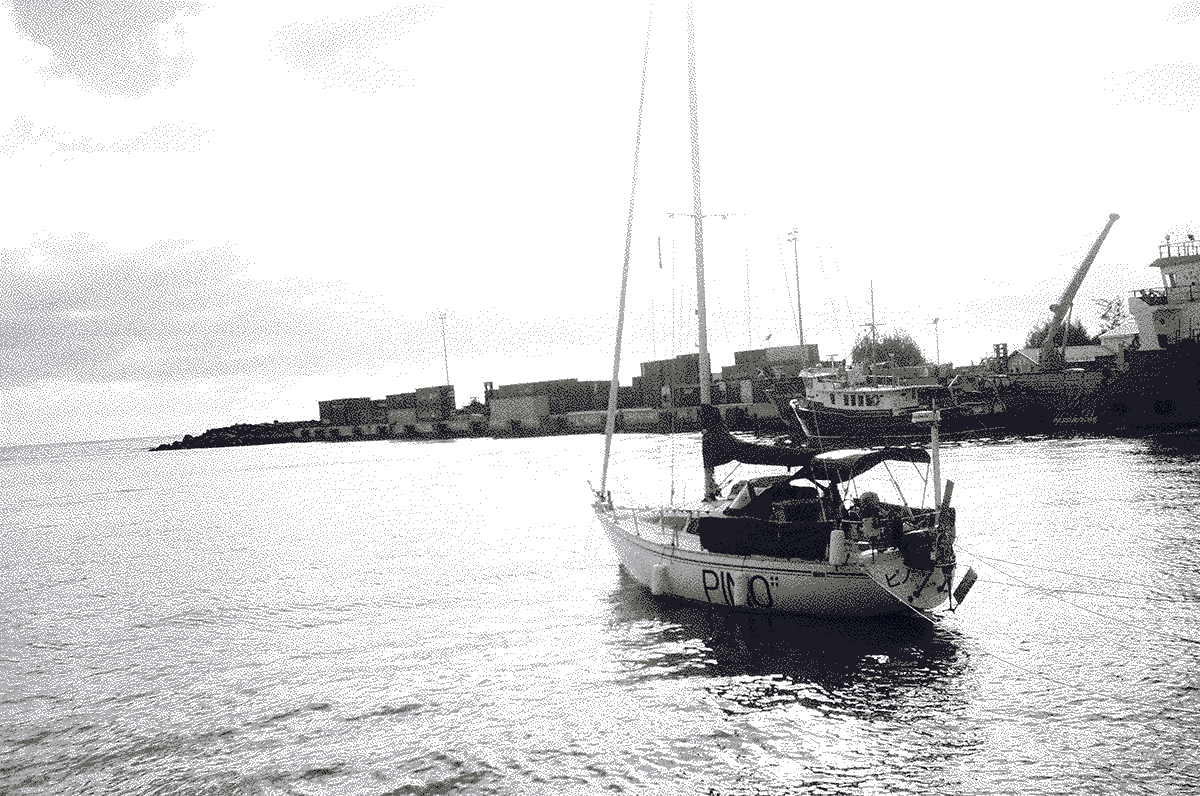why a boat

From 2012 to 2014, we lived in Japan. Rek was working in an animation studio, and Devine, in a software company. On weekends and evenings, we worked on our first two games: Hiversaires & Oquonie. Originally from Québec, we were traveling back and forth between Canada and Japan often. We wanted to exit the wasteful loop of acquiring the necessities of life each time our lives were uprooted.
We had heard of people living on sailboats but neither of us had even stepped foot on one, nevertheless, we soon found ourselves watching the videos of David Wellsford, Teresa Carey and Nike Steiger, and became obsessed with the idea. Lack of experience aside, we thought that traveling was a good catalyst for learning new languages, for developing an interest in foreign cultures and ultimately for building empathy, curiosity, and creativity.
In January 2016, we left the cold of Montréal and moved west to British Columbia, where we purchased Pino. Our curiosity soon led us to make our first trip out to sea, which escalated into a circumnavigation of the Pacific Ocean.
Our life at sea changed how we work, and how we think. We've always made art, and always will, but now we are working on ways to keep doing that sustainably, which translates to making lean and open software that are backward-compatible.
A boat, for all its complexity, is in fact a version of simplicity, but of a satisfyingly complex kind.Adam Nicolson
story
Back in 2016, when first operating on a sailboat, we experienced frequent failures with both software & hardware, largely due to our small energy storage and lack of reliable connectivity. The solution was to create tools that would be better suited to the limits of our new situation. The objective was to replace the bloated subscription software that we were using to do creative work, such as Photoshop, Xcode and Ableton. We were somewhat familiar with web technologies, so we decided to build our programs on this new up and coming framework called Electron.
While solving some of our issues, Electron was rapidly increasing in size and hunger, so despite it being open-source soon joined the rest of the software that we did away with. Our focus shifted toward reducing our energy use, and to ensure reliability we began removing dependencies.
To transition toward our new goals, we developed offline web versions as temporary stand-ins while researching ways to build more resilient software. We eventually ported our tools to C, but while we had achieved ideal energy usage, portability was still an issue for graphical applications, so we kept looking. We learned 6502 Assembly, seeing players run our games as NES roms on all these different platforms gave us an idea.
In 2021, we began designing a small virtual machine with a focus on implementability; meaning that moving forward, the applications themselves would no longer need to be ported. Instead, to make any one program available on a new platform, the emulator would be the only code needing to be modified, which is explicitly designed to be easily implemented.
This is where we are now. Uxn might solve our cross-platform issues, while being quite light and energy efficient. We hope that one day the Uxn versions of our software replace the desktop and web versions — But, we'll have to see about that [16.05.21].
Let's try to go slow, and fix things.